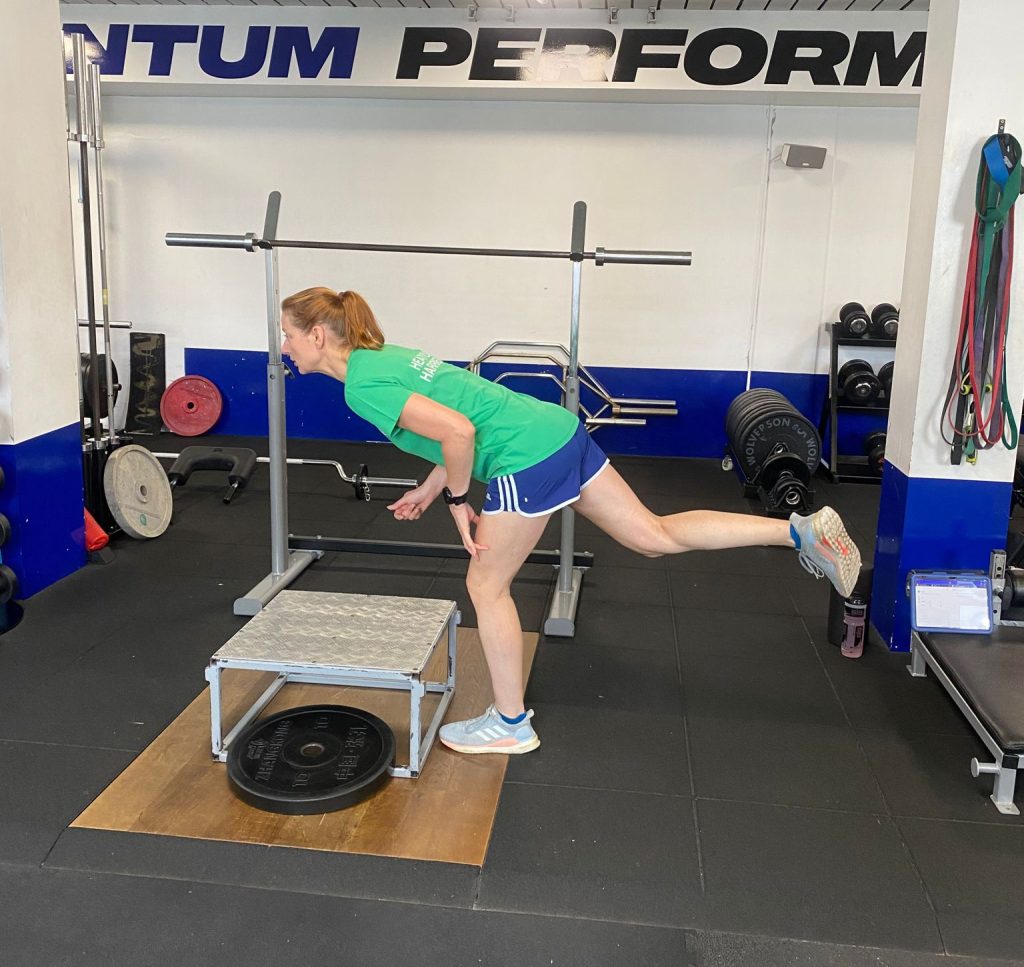Strength training is important because it offers many benefits that can enhance your performance and reduce the risk of injuries. Here are some key reasons why you should incorporate strength training into your routine, especially during the off-season. We will also look at additional risks associated with running.
Injury Prevention
Muscle Imbalances: Running primarily engages certain muscle groups. Strength training helps address muscle imbalances by targeting neglected muscle groups, reducing the risk of injuries caused by these imbalances. It is predominately single plane movement of repetition. This increasing the chances of imbalance.
Joint Stability: Strengthening muscles around joints enhances stability, reducing the risk of injuries such as sprains and strains, it also aids the ability for the body to tolerate a ground reaction force that occurs as the foot hits the ground. The body needs to be efficient at absorbing this.
Improved Running Economy
Efficient Muscle Recruitment: Strength training improves the efficiency of muscle recruitment, making each stride more powerful and less energy consuming. Energy leakage i.e. dynamic instability results in greater ground contact time, and an increased load on muscle groups increasing risk of injury.
Increased Power and Speed
Explosive Strength: Exercises like squats and lunges develop explosive strength, contributing to a more powerful stride and increased running speed. Running is only ever performed with one foot on the ground, the faster you move the more impact. Therefore, the requirement of more strength and stability.
Enhanced Endurance
Muscular Endurance: Strength training improves muscular endurance, allowing runners to maintain good form and performance over longer distances. At a minimum 4x body weight ground reaction force, a 100kg person would be exposed to roughly 400kg load. (This is dissipated with mass, momentum, and the elastic system within the body so not a true total number).
However, 100kg x 4 = 400. 400kg x 40,000 step over a week = 16,000,000kg of load. You can see why strength capacity is required. Your 3×10 lunges wont touch the surface of what is required over the course of a week. Now consider this over a month, 2 months etc.
Core Strength
Posture and Stability: A strong core is crucial for maintaining good posture during runs, reducing the risk of lower back pain and improving overall stability.
Now, let’s look at some of the best strength training exercises for runners, we do need to be honest here though. Every single person is different, therefore demands will be different, their needs will be different but adding these in will be a good start.
- Squats
- Lunges
- Deadlifts
- Calf Raises
- Planks
- Bridges
- Single-Leg Exercises (e.g., Single-Leg Squats or Step-Ups)
- Leg Press
- Box Jumps
- Medicine Ball Exercises (e.g., Russian Twists)
So, if you are strong enough and have already incorporated strength training into your program what are the other risk factors?
Running volume can be a significant factor in determining the risk of injuries for runners. While running is an excellent form of cardiovascular exercise and has numerous health benefits, overdoing it in terms of volume (mileage or duration) without proper consideration of factors like recovery, form, and individual tolerance, can increase the risk of various issues. Here are some considerations regarding the impact of running volume on the risk of injuries:
Overuse Injuries
Running long distances without adequate rest can lead to overuse injuries. Common overuse injuries include stress fractures, shin splints, tendinitis, and stress reactions. These injuries often result from repetitive stress on the same muscles, tendons, or bones without sufficient recovery time.
Muscle Fatigue
High running volume can lead to muscle fatigue, which may compromise running form. Poor form increases the risk of injuries, as the body may not absorb shock efficiently, placing additional stress on joints and muscles. Hence the importance of staying strong to reduce this risk.
Risk of Burnout
Excessive running volume without adequate recovery can contribute to physical and mental burnout. This can lead to a decline in performance, motivation, and an increased susceptibility to injuries.
Lack of Cross-Training
Focusing solely on running without incorporating cross-training activities, such as strength training, can lead to muscular imbalances and increase the risk of injuries. Strength training helps address weaknesses and promotes overall body resilience.
Recovery Time
Adequate recovery time is crucial for preventing injuries. Running too frequently without allowing the body to recover increases the risk of cumulative stress on tissues, making them more prone to injuries.
To mitigate the risks associated with running volume, it’s essential for runners to:
Gradually Increase Mileage
-
- Gradually increase running volume to allow the body to adapt to the demands of training. Sudden and significant increases in mileage can stress the body and increase injury risk.
Incorporate Rest Days
-
- Schedule regular rest days to allow for physical recovery. Rest days are essential for preventing overuse injuries and giving the body time to repair and adapt.
Listen to the Body
-
- Pay attention to signals from your body, such as persistent pain, fatigue, or signs of overtraining. If something doesn’t feel right, it’s important to address it promptly.
Include Cross-Training
-
- Incorporate cross-training activities, such as swimming, cycling, or strength training, to diversify the physical demands on the body and reduce the risk of overuse injuries.
Evidence shows that the first 4 weeks and last 4 weeks of a training cycle have an increased risk, this is however, during a build phase early on and most likely an endurance phase towards the end. Therefore, when considering volume, additional factors should be considered:
Rate of perceived exertion (RPE) incline/ Decline
Speed / Terrain
Sleep
Nutrition & Hydration
There is an old saying that volume should be increased at no more than 10%. The 10% rule is old school and has effectively been debunked. Albeit the 10% is a safe objective measure it is actually very slow progress, but this is dependent on a individual’s tolerance. Some can tolerate 20-30% increase but with high mileage weeks 10% can be a huge jump never mind 30%.
Remember, you get fit and strong to start the training program. Not start the training program to get fit and strong. Listening to the body at times is useful despite what the programme states. Monitoring your Heart Rate Variability (HRV) is one of these methods that can be reviewed.
Get in touch if you need some advice, guidance or treatment.




